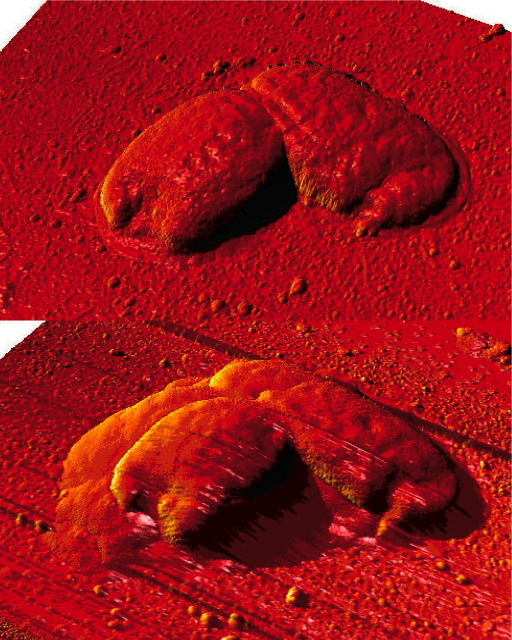Theory-Group
Annual Report 2006
Experiments and ProjectsPlasma Medicine
In the project ''plasma medicine'' the suitability of atmospheric low-temperature plasma in the treatment of chronic wounds is investigated in a cooperation with the LMU Munich/Hospital München Schwabing and ADTEC Plasma Technology Co., Ltd. (Japan). New developments and tests with respect to its medical compatibility allow for the first clinical study of ''plasma'' wound healing worldwide.
The bactericidal effect of plasmas is well known and utilized for the sterilization of surfaces e.g. of medical instruments. Their properties, like contact-free treatment and penetration into small cavities, makes this technique highly attractive for medical in-vivo applications, e.g. for the treatment of leg and foot ulcer.
It is generally accepted that bacterial colonization of the wounds prolongates or even inhibits the healing process, which is further complicated by germs that are resistant to many antibiotics. A significant reduction of the bacteria load by the plasma treatment should lead to a better healing process. Another benefit from this application is expected from the avoidance of unwanted side-effects of established methods: Since the sterilization mechanism is different from antibiotics, bacteria cannot acquire resistances. Furthermore our own ex-vivo studies proved that even multi-resistant bacteria types can be treated successfully with this technique.
To this clinical purpose a new plasma device (a microwave plasma torch, working at atmospheric pressure) has been developed by our group and tested with respect to medical compatibility. In particular, the temperature of the plasma at it's operating range is of about 37oC, low enough for 'in vivo' applications. The results of comprehensive preclinical ex-vivo tests of human blood, skin and cell samples did not reveal any medical incompatibilities. Meanwhile we are conducting the worldwide first clinical study of wound healing with the help of atmospheric plasmas. The available study results confirm a reduction of the bacteria load on the wounds. Also, no unwanted side-effects have been observed and the patients did not report any painful sensations during or after the treatment.
The objective of our investigation however is not only to proof the efficiency of the treatment but also to understand the underlying biophysical mechanisms. The sterilizing effect of plasma treatment can be attributed to several (possibly superimposed) mechanisms, including e.g. the UV radiation, charged particles and generated radicals. Beside physical diagnostics we use different microscopic imaging techniques such as optical, fluorescent, Raman- and atomic force (AF) microscopy for answering this question. Figure 1 shows high resolution AFM-images of two E.coli bacteria, before and after a three minute plasma treatment. The bacteria are highly damaged after the treatment (disruption of their cell walls).

Fig. 1: AFM-images of E.coli bacteria (field of view: ~5 µm). The image shows two bacteria before treatment (upper panel) and the same bacteria after three minutes of plasma-treatment (lower panel).
Read more on that on our new Plasma Health Care homepage!
Updated: 2007-10-18
Contact: Michael Kretschmer